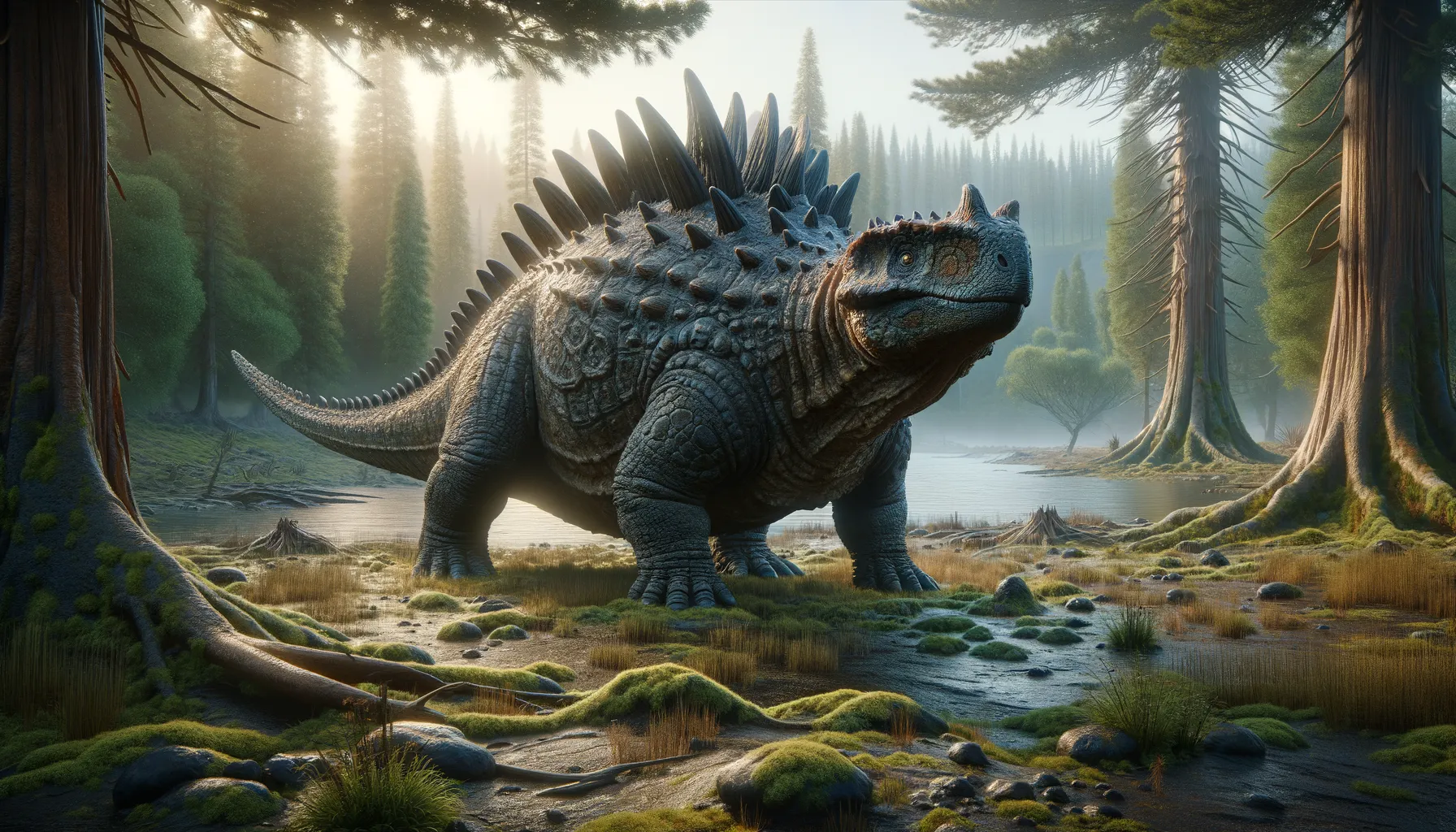
Zaraapelta
Armored titan of the Late Cretaceous era.
Period
Cretaceous
Length
About 20 feet long.
Height
Approximately 4.5 feet tall at the hips.
Weight
Estimated to weigh around 2 tons.
Zaraapelta, a member of the Ankylosaur family, was a heavily armored dinosaur that lived during the Late Cretaceous period. It was characterized by its distinctive clubbed tail, which it used for defense. Discovered in Mongolia, this herbivorous dinosaur had a relatively low stance and was well-adapted to grazing on low-lying vegetation. Its fossils have provided valuable insight into the diversity and adaptability of ankylosaurs.
Diet
Zaraapelta was herbivorous, primarily feeding on low-growing plants and shrubs. Its teeth were suited to grinding vegetation, and its large gut likely helped digest tough plant material.
Hunting
Being a herbivore, Zaraapelta did not hunt. It focused on finding and consuming adequate vegetation to sustain its large size.
Environmental challenges
Zaraapelta faced environmental challenges such as predation from larger theropods. Its environment could experience fluctuations in plant availability due to climate changes. Its heavy armor, however, provided significant protection from predators. Successful migration patterns would have been crucial during periods of resource scarcity.
Speed
Likely slow due to heavy armor.
Lifespan
Estimated to be several decades.
First discovery
Discovered in Mongolia in 2014.
Fun Facts
- Zaraapelta is an ankylosaurid dinosaur, known for its armored body and club-like tail.
- Its name 'Zaraapelta' means 'hedgehog shield' in reference to its spiky armor.
- Zaraapelta lived during the Late Cretaceous period, about 75 million years ago.
- Fossils of Zaraapelta have been discovered in the Gobi Desert of Mongolia.
- This dinosaur is particularly noted for its distinctive skull, which features unique horn and armor arrangements.
- Despite its fierce armor, Zaraapelta was a plant-eater, browsing low vegetation.
- The discovery of Zaraapelta helped scientists understand more about the diversity of ankylosaurs in Asia.
Growth and Development
Zaraapelta, like other dinosaurs, experienced significant growth after hatching. Its armored plating developed as it matured to provide protection. Rapid growth was likely necessary for survival in its predator-rich environment. Juveniles would have required ample vegetation and secure habitats to reach adulthood.
Habitat
Zaraapelta lived in what is now Mongolia, in an environment likely consisting of arid or semi-arid conditions. It inhabited regions with ample vegetation, providing necessary food sources. The terrain may have included open areas with sparse forestation.
Interaction with other species
Zaraapelta coexisted with other dinosaur species, some of which were predators. Its primary interactions involved avoiding predators and competing with other herbivores for food resources. Its presence would have influenced the local ecosystem through its grazing habits.
Natural lifespan
Zaraapelta's natural lifespan was likely several decades under ideal conditions.
Reproduction
Zaraapelta, like most dinosaurs, likely laid eggs. Nesting sites would have been in secure locations, with parents possibly guarding over the eggs. Hatchlings were precocial and required rapid growth to avoid predation.
Social behaviour
Zaraapelta might have lived in small groups or solitary, depending on resource availability. Group living could provide protection and aid in locating food supplies. Social interactions likely included visual and possibly auditory signals.
Fossil locations
Fossils of Zaraapelta have been found in the Gobi Desert of Mongolia. The region is internationally recognized for its rich dinosaur deposits. Zaraapelta's fossils have contributed to the understanding of ankylosaur diversity in Asia.
